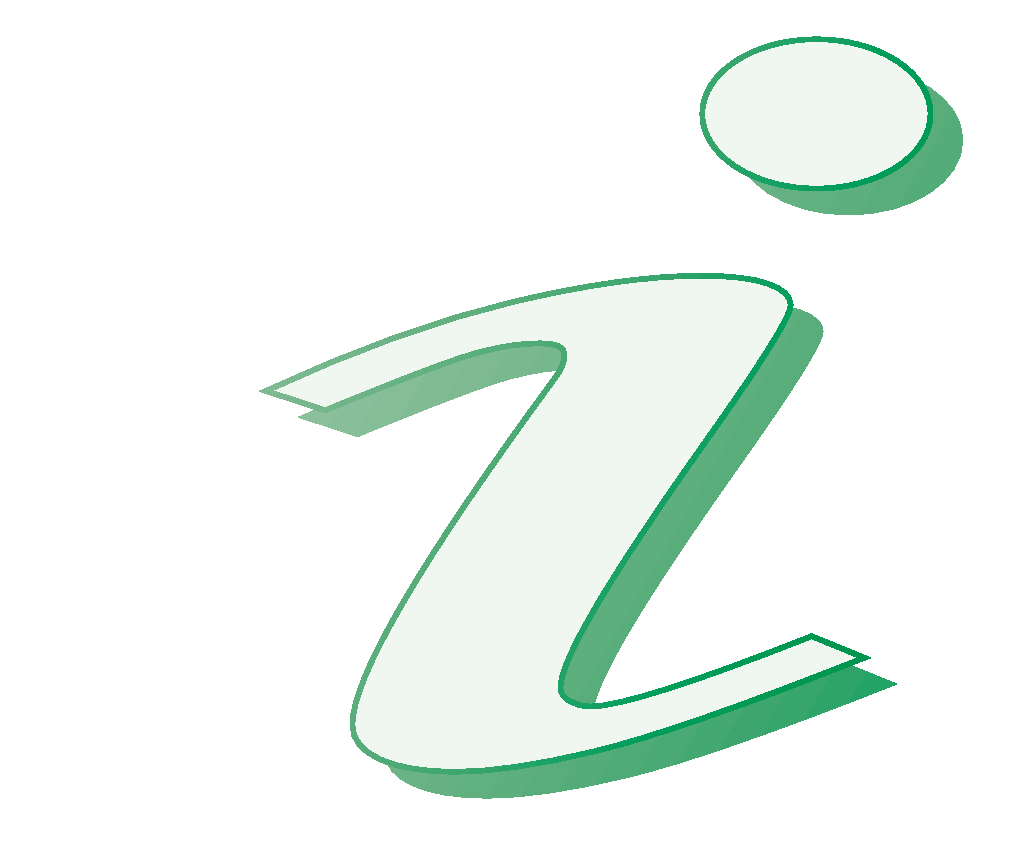Fasteners and retainers
Adapter sleeves and withdrawal sleeves are suitable for locating bearings with a tapered bore on cylindrical shafts ➤ Figure, whereby:
- adapter sleeves require no additional means of retention on the shaft ➤ link
- withdrawal sleeves give easier subsequent dismounting of the bearing ➤ link
- designs with oil slots permit the use of the hydraulic method ➤ link and ➤ link
Locknuts and shaft nuts are suitable for locating bearings on cylindrical and tapered shafts, or on adapter sleeves, and for mounting and dismounting of bearings on withdrawal sleeves, whereby:
- locknuts can be tightened particularly easily with striking-face or hook wrenches ➤ link
- shaft nuts do not require any slots on the outside of the shaft, which increases the strength of the shaft and makes it easier to produce ➤ link
Tab washers and retaining brackets are suitable for securing locknuts, whereby:
- tab washers for smaller locknuts (series KM and KML) ➤ link and
- retaining brackets for larger locknuts (series HM30 and HM31) are used ➤ link
|
Location of a spherical roller bearing with tapered bore
|
 |
Product design
Adapter sleeves
Suitability and function
Adapter sleeves are suitable where bearings with a tapered bore are to be located on cylindrical shafts. In this case, the bearing is pressed onto the adapter sleeve until the required reduction in radial internal clearance is achieved. Adapter sleeves require no additional means of retention on the shaft. The bearings can be positioned at any point on shafts with a constant diameter.
If adapter sleeves are used with a support ring to DIN 5418 on stepped shafts, the bearings can be axially located to high accuracy. In addition, this gives simpler dismounting of the bearings.
Design features
The tensile strength of the adapter sleeve material is at least 430 N/mm2. Adapter sleeves are slotted and have a shaft thread for the locknut. Depending on the series, the outside surface of the adapter sleeves has a taper of 1:12 or 1:30 ➤ Table.
Adapter sleeves
|
Series |
Taper on the outside surface |
|---|---|
|
H2, H3, H23, H28, H30, H31, H32, H33, H38, H39 |
1:12 |
|
H240, H241, H242, H248, H249 |
1:30 |
Adapter sleeves for the hydraulic method
The mounting and dismounting of large bearings requires high mounting forces and is made easier by using the hydraulic method. Adapter sleeves for the hydraulic method have oil slots and an oil connector ➤ Figure. Depending on the arrangement of oil slots and oil connector, the adapter sleeves have the suffix HG, HGJ, HK or HKJ ➤ section. The product tables give the mounting dimensions for the oil connector.
Adapter sleeves with a sleeve bore diameter greater than or equal to 300 mm are only available in the design for the hydraulic method. For adapter sleeves with sleeve bore measurements between 140 mm and 280 mm, a design with or without oil slots can be selected in the product tables. Smaller adapter sleeves for the hydraulic method are available by agreement.
|
Spherical roller bearings on adapter sleeve for hydraulic method
|
 |
Available designs
Adapter sleeves are supplied complete with locknuts and tab washers. For larger sizes, retaining brackets are used instead of tab washers ➤ Figure. Sizes not listed in the product tables are available by agreement.
The product tables contain adapter sleeves for metric shafts. Adapter sleeves for inch size shafts are available by agreement.
Adapter sleeves for sealed spherical roller bearings and for toroidal roller bearings are also available by agreement.
|
Adapter sleeves
|
 |
Withdrawal sleeves
Suitability and function
Withdrawal sleeves are suitable where bearings with a tapered bore are located on cylindrical shafts. The tapered sleeve is pressed into the bearing bore until the required reduction in radial internal clearance is achieved. The bearing must be axially supported during this process, for example by means of a shaft shoulder.
Withdrawal sleeves give easier dismounting of the bearings, as the press fit of the bearing can be loosened with the aid of a locknut applied to the withdrawal sleeve.
Design features
The tensile strength of the withdrawal sleeve material is at least 430 N/mm2. Withdrawal sleeves are slotted and have a shaft thread for the locknut. Depending on the series, the outside surface of the withdrawal sleeves has a taper of 1:12 or of 1:30 ➤ Table.
Withdrawal sleeves
|
Series |
Taper on the outside surface |
|---|---|
|
AH2, AH(X)3, AH22, AH(X)23, AH28, AH(X)30, AH(X)31, AH(X)32, AH33, AH38, AH39 |
1:12 |
|
AH240, AH241, AH242, AH248, AH249 |
1:30 |
Withdrawal sleeves for the hydraulic method
The mounting and dismounting of large bearings requires high mounting forces and is made easier by using the hydraulic method. Withdrawal sleeves for the hydraulic method have oil slots in the tapered outside surface and in the sleeve bore ➤ Figure. Oil connectors are offset to each other by 90°. The hydraulic withdrawal sleeves have the suffix H ➤ section. The product tables give the mounting dimensions for the oil connector.
Withdrawal sleeves with a sleeve bore diameter greater than or equal to 300 mm are only available in the design for the hydraulic method. For withdrawal sleeves with sleeve bore measurements between 150 mm and 280 mm, a design with or without oil slots can be selected in the product tables. Smaller withdrawal sleeves for the hydraulic method are available by agreement.
|
Spherical roller bearing on withdrawal sleeve for hydraulic method |
 |
Available designs
Locknuts and retainers are not included in the scope of delivery for withdrawal sleeves ➤ Figure. Sizes not listed in the product tables are available by agreement.
The product tables contain withdrawal sleeves for metric shafts. Withdrawal sleeves for inch size shafts are available by agreement.
|
Withdrawal sleeve |
 |
Locknuts
Suitability and function
Locknuts can be used to locate bearings on shafts or adapter sleeves. They also give easier mounting of bearings with a tapered shaft seat and the mounting and dismounting of bearings on withdrawal sleeves.
Design features
The locknuts are made from steel and the tensile strength of the material is at least 350 N/mm2.
They have four or eight evenly spaced slots on the circumference, into which hook wrenches or striking-face wrenches can be fitted ➤ Figure.
Available designs
Locknuts with threaded holes for mounting screws are available by agreement. These locknuts have the suffix H.
Precision locknuts are described in a separate publication TPI 123.
|
Locknuts
|
 |
Shaft nuts
Suitability and function
Shaft nuts HMZ allow precise, secure axial location of bearings on cylindrical and tapered shafts or on adapter sleeves.
Design features
The shaft nuts are made from steel and the tensile strength is at least 350 N/mm2.
Shaft nuts HMZ are interchangeable with conventional locknuts HM and KM. They are secured, however, not by means of form fit using tab washers or retaining brackets, but by force locking. Four or eight axial clamping screws allow uniform clamping of the thread flanks on the circumference ➤ Figure. There is no need for slots on the outside diameter of the nut.
For screw mounting on the shaft thread, four or eight threaded blind holes are applied to the circumference of the nut, into which the threaded rod also supplied is screwed.
Advantages for the shaft
A shaft with a screw mounted shaft nut does not require a retaining slot. As a result, the shaft has higher strength and is more economical to manufacture than a shaft with a retaining slot for a tab washer or retaining bracket.
Detailed description of shaft nuts HMZ TPI WL 91-8.
|
Shaft nut The clamping screws serve to generate a force locking connection between the nut and shaft thread |
 |
Retainers
Tab washers
For smaller locknuts
Tab washers MB and MBL are simple, reliable elements for securing smaller locknuts (series KM and KML) ➤ Figure.
They have an inner tab and several outer tabs evenly spaced around the circumference. The inner tab grips in the slot on the adapter sleeve or shaft, one of the outer tabs is bent into a slot in the nut for location.
The washers are made from steel and the tensile strength of the material is at least 300 N/mm2.
Retaining brackets
For locknuts HM30 and HM31
Retaining brackets MS are used to secure locknuts HM30 and HM31.
The retaining brackets are fixed to the locknut using a hexagonal screw. They engage in a slot in the nut and in the adapter sleeve or shaft ➤ Figure.
The fixing screws are secured with a retainer.
|
Retainers
|
 |
Load carrying capacity
Static axial load carrying capacity of locknuts and shaft nuts

The static axial load carrying capacity of locknuts and shaft nuts must not be exceeded, as this may damage the thread. In this case, operational reliability can no longer be ensured.
The values for static axial load carrying capacity have been calculated in accordance with guideline VDI 2230. The calculation assumes that the quality requirements relating to the shaft thread are met ➤ section.
The values for the static axial load carrying capacity of locknuts are contained in the product tables ➤ link.
For information on the static axial load carrying capacity of shaft nuts HMZ, please consult Schaeffler.
Dimensions, tolerances
Adapter and withdrawal sleeves

Dimensions and material correspond to DIN 5415 for adapter sleeves, DIN 5416 for withdrawal sleeves and to ISO 2982-1.
The bore tolerance of adapter and withdrawal sleeves before splitting for a taper 1:12 is in tolerance class JS9, for a taper 1:30 in tolerance class JS7 to DIN EN ISO 286-1.
Up to a thread diameter of 200 mm, adapter and withdrawal sleeves have a metric fine pitch thread to DIN 13, tolerance class 6g to DIN ISO 965-3. Larger threads are produced as trapezoidal threads to DIN 103, tolerance zone 7e to DIN 103-3.
Withdrawal sleeves are available in designs with modified thread G. These have the suffix G.
Locknuts and shaft nuts
Dimensions and material correspond to DIN 981 and ISO 2982-2.
Up to a thread diameter of 200 mm, locknuts and shaft nuts have a metric fine pitch thread to DIN 13, tolerance class 6H to DIN ISO 965-3. Larger threads are produced as trapezoidal threads to DIN 103, tolerance zone 7H to DIN 103-3.
Suffixes
For a description of the suffixes used in this chapter ➤ Table to ➤ Table and medias interchange http://www.schaeffler.de/std/1B69.
Suffixes and corresponding descriptions, adapter sleeves
|
Suffix |
Description of suffix |
|
|---|---|---|
|
HG |
Hydraulic adapter sleeve with oil slots on the taper face |
Standard |
|
HGJ |
Hydraulic adapter sleeve with oil slots on the taper face |
Standard |
|
HK |
Design as for HG, but with oil connectors on the opposing axial face |
Standard |
|
HKJ |
Design as for HGJ, but with oil connectors on the opposing axial face |
Standard |
Suffixes and corresponding descriptions, withdrawal sleeves
|
Suffix |
Description of suffix |
|
|---|---|---|
|
H |
Hydraulic withdrawal sleeve with oil slots on the taper face and in the bore |
Standard |
|
G |
Hydraulic withdrawal sleeve with modified thread G |
Standard |
Suffixes and corresponding descriptions, locknuts
|
Suffix |
Description of suffix |
|
|---|---|---|
|
H |
Locknuts with threaded holes for mounting screws |
Standard |
|
HP |
Locknuts with threaded holes for mounting screws and through hole for oil connector to withdrawal sleeves |
Standard |
Design of bearing arrangements
Shafts for adapter sleeves and withdrawal sleeves
Diameter tolerances
Adapter and withdrawal sleeves adapt themselves to the shaft. Larger diameter tolerances are therefore permissible for shafts where the bearing is located using adapter sleeves or withdrawal sleeves, than in the case of a direct cylindrical seat for a bearing on the shaft.
For general applications, shafts toleranced in accordance with tolerance class h9 Ⓔ to DIN EN ISO 286-1 are sufficient.
Geometrical tolerances
The geometrical tolerances of the shafts must be tighter than the diameter tolerances since the geometrical accuracy affects the running accuracy of the bearing arrangement.
The cylindricity of the shaft for shaft diameters in tolerance classes h7 or h8 should lie within tolerance zone IT5/2 to DIN EN ISO 286-1 and, for shaft diameters in tolerance class h9, within IT6/2.
Shaft thread for locknuts and shaft nuts
Thread tolerances
Tolerance specifications must be observed for the thread on shafts that locknuts or shaft nuts are screw mounted onto.
Metric shaft threads to DIN 13 must be manufactured in accordance with tolerance class 6g to ISO 965-3. Trapezoidal threads to DIN 103 must be manufactured in accordance with tolerance class 7e to DIN 103-3.
Mounting and dismounting
Adapter and withdrawal sleeves
The mounting and dismounting options for adapter and withdrawal sleeves, by hydraulic or mechanical methods, must be taken into consideration in the design of the bearing position.
Suitable mounting method dependent on the bearing size
The larger the bearing, the higher the forces that will be required for mounting. The bearing is either pressed onto the adapter or withdrawal sleeve, or the sleeve is pressed between the bearing bore and the shaft. Various mounting methods are suitable depending on the size of the bearing:
- direct application of axial mounting forces by tightening of the locknut or shaft nut ➤ Figure
- nuts with pressure screws ➤ Figure
- hydraulic nuts ➤ Figure
- hydraulic method, made possible through the use of hydraulic adapter or withdrawal sleeves with oil slots and oil connectors ➤ Figure and ➤ Figure
Further information on the mounting and dismounting of adapter and withdrawal sleeves is given in the introductory chapter on the mounting and dismounting of bearings ➤ section, the chapter on spherical roller bearings ➤ section and ➤ section, and in the Schaeffler Mounting Handbook MH 1.
Schaeffler Mounting Handbook
Rolling bearings must be handled with great care
Rolling bearings are well-proven precision machine elements for the design of economical and reliable bearing arrangements, which offer high operational security. In order that these products can function correctly and achieve the envisaged operating life without detrimental effect, they must be handled with care.
The Schaeffler Mounting Handbook MH 1 gives comprehensive information about the correct storage, mounting, dismounting and maintenance of rotary rolling bearings http://www.schaeffler.de/std/1B68. It also provides information which should be observed by the designer, in relation to the mounting, dismounting and maintenance of bearings, in the original design of the bearing position. This book is available from Schaeffler on request.
Legal notice regarding data freshness
The further development of products may also result in technical changes to catalogue products
Of central interest to Schaeffler is the further development and optimisation of its products and the satisfaction of its customers. In order that you, as the customer, can keep yourself optimally informed about the progress that is being made here and with regard to the current technical status of the products, we publish any product changes which differ from the printed version in our electronic product catalogue.
We therefore reserve the right to make changes to the data and illustrations in this catalogue. This catalogue reflects the status at the time of printing. More recent publications released by us (as printed or digital media) will automatically precede this catalogue if they involve the same subject. Therefore, please always use our electronic product catalogue to check whether more up-to-date information or modification notices exist for your desired product.






